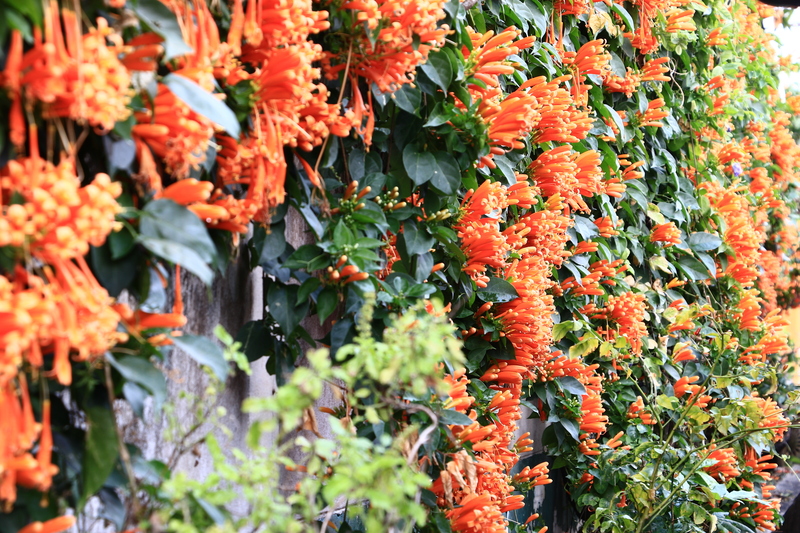Harnessing the Power of Vertical Gardening
Posted on 29/06/2025
Harnessing the Power of Vertical Gardening: Transforming Spaces and Cities
Vertical gardening has emerged as a revolutionary approach to maximizing green space, especially in urban environments where horizontal space is at a premium. Whether on towering apartment balconies or the side of city buildings, vertical gardens are transforming the way we think about urban agriculture, home aesthetics, and environmental impact. In this comprehensive article, we will delve into the various facets of vertical garden systems and how you can tap into their extensive benefits.
What is Vertical Gardening?
Vertical gardening refers to the technique of growing plants upward, either on specially designed structures or improvised surfaces, instead of the traditional method of growing them on flat, horizontal plots. This space-saving gardening offers a fresh solution for city dwellers, eco-conscious homeowners, and anyone striving to add more greenery to limited areas.
Origin and Evolution of Vertical Gardens
The idea of vertical planting isn't entirely new--historically, hanging gardens were celebrated wonders of the ancient world, and climbing plants have always found creative ways to grow upwards. However, modern vertical gardening innovations owe much to advancements in design, irrigation, and materials, making them accessible and sustainable for public, commercial, and personal use.

Advantages of Vertical Gardening
- Maximizes Space: Turn unused walls, fences, or balconies into productive green zones.
- Improves Air Quality: Greenery absorbs carbon dioxide and releases fresh oxygen, even in dense urban environments.
- Thermal Insulation: Living walls can act as natural insulation, reducing energy costs and creating a more comfortable environment.
- Boosts Aesthetics: Vertical gardens can transform dull areas, adding vibrant colors and textures that enhance any space.
- Noise Reduction: Strategic plant placement can help dampen city sounds for a calmer atmosphere.
- Promotes Mental Well-being: Access to green spaces, even vertical ones, elevates mood and reduces stress levels.
Environmental Impact of Vertical Gardening
In cities where greenery is scarce, vertical gardening systems act as mini-ecosystems. They play a crucial role in reducing urban heat, managing stormwater runoff, and promoting biodiversity by providing habitats for pollinators like bees and butterflies.
Types of Vertical Gardens
There are several styles and systems for vertical gardens, each with its own advantages, challenges, and aesthetic appeal. Let's explore the most popular options:
1. Living Walls (Green Walls)
- Definition: These are support structures that allow a diverse range of plants to grow hydroponically or in soil, attached to exterior or interior building walls.
- Use Cases: Common in office lobbies, hotels, and residential towers.
- Highlight: Often equipped with automated irrigation systems for ease of maintenance.
2. Vertical Planters and Towers
- Definition: Freestanding units or stacked plant pots ideal for balconies, rooftops, or patios.
- Benefits: Easily movable and customizable; great for herbs, strawberries, and small vegetables.
3. Trellises and Climbers
- Definition: Simple lattices or frames installed vertically for vining plants such as tomatoes, peas, or flowering climbers.
- Benefit: Inexpensive and effective for both ornamental and edible plants.
4. Pocket Gardens
- Definition: Wall-mounted fabric or felt pockets filled with soil and plants.
- Ideal For: Small lettuces, ferns, and decorative foliage.
5. Modular Green Wall Panels
- Definition: Pre-made panels that clip onto existing walls, offering instant greenery and easy swaps.
- Use Case: Businesses wanting to enhance curb appeal rapidly.
Choosing the Right Plants for Vertical Gardening
Choosing suitable plants is essential for a thriving vertical planting system. Here are some pointers:
- Sunlight Requirements: Assess wall or planter exposure--select full sun, partial shade, or shade-loving species accordingly.
- Growth Habits: Opt for climbing, trailing, or bushy plants that can easily adapt to vertical conditions.
- Maintenance Needs: Drought-resistant and pest-tolerant plants often perform better with less care.
Popular Flowers, Herbs, and Vegetables for Vertical Gardens
- Ornamental Choices: Petunias, ferns, succulents, begonias, and ivy.
- Herbs: Basil, mint, thyme, oregano, cilantro, and parsley.
- Edibles: Strawberries, cherry tomatoes, peppers, dwarf beans, and leaf lettuces.
Mixing different plant types creates a vibrant, multi-textured living wall garden that attracts pollinators and delights the senses.
Designing and Installing a Vertical Garden
Creating a successful vertical gardening system involves several crucial steps, from selecting the proper structure to ongoing maintenance.
1. Assess Your Space and Structure
- Measure your wall or balcony dimensions.
- Check for weight limits, especially on balconies or indoor walls.
- Ensure your structure is weather-resistant if outdoors.
2. Choose the Right System
- DIY trellis, purchased wall planters, or professional green wall installation?
- Consider budget, time, and your level of gardening experience.
3. Plan the Irrigation
- Automated drip irrigation is highly recommended for large or indoor installations.
- Manual watering works well for smaller, outdoor gardens.
- Ensure good drainage to prevent root rot.
4. Select the Growing Medium
- Soil: Use lightweight potting soil with excellent drainage.
- Hydroponics: Some systems use soil-less media for cleaner, faster-growing solutions.
5. Plant and Arrange Creatively
- Stagger plant sizes for a lush, layered effect.
- Group similar sunlight and water needs together.
- Leave space for growth and ensure adequate airflow.
Maintaining Your Vertical Garden
Sustaining a thriving green wall or vertical planter requires regular attention, especially in the early stages. Here's how to keep your vertical oasis at its best:
- Watering: Monitor moisture levels and adjust according to plant needs and climate conditions.
- Fertilization: Feed your plants with diluted, balanced nutrients to promote vigorous growth.
- Pruning: Regular trimming prevents overcrowding, disease, and encourages bushier growth.
- Pest Management: Use non-toxic or organic solutions to keep pests at bay.
Innovative Applications of Vertical Gardening
Beyond the home or balcony, vertical garden installations are making a difference in larger community and commercial settings:
Urban Agriculture and Food Security
With population density rising, vertical farming systems in urban centers provide local, fresh produce. Skyscraper facades, warehouse interiors, and schoolyards are being retrofitted to support food crops and reduce supply chain burdens.
Corporate and Public Green Spaces
Businesses and city governments are integrating living walls into their designs for environmental and marketing benefits. Green walls can improve employee morale, enhance building ratings (such as LEED certification), and draw attention to sustainability commitments.
Home Decor and Indoor Air Quality
Vertical garden kits are becoming popular interior design elements, serving both aesthetic and health purposes by filtering indoor air and injecting life into otherwise sterile spaces.
Overcoming Common Challenges in Vertical Gardening
While the advantages are plentiful, vertical gardening is not without its hurdles:
- Watering Issues: Uneven watering can lead to dry spots or soggy roots. Solution: use drip irrigation and check regularly.
- Structural Support: Weight can be a concern on weak walls. Solution: consult professionals for large installations.
- Sunlight Access: Shadowed areas may not support all plant types. Solution: select shade-tolerant species for covered areas.
- Initial Costs: Professional systems can be pricey. DIY options and small-scale kits are more budget-friendly.
Future Trends in Vertical Gardening
The future of vertical gardens is bright, with new technologies and innovations making it easier than ever to bring greenery to unlikely places. Futuristic trends include:
- Smart Integration: Automated systems with sensors monitor soil, humidity, and plant health.
- Solar Power: Vertical gardens that incorporate solar panels for self-sufficiency and energy savings.
- Edible Walls: Seamless integration of food production into urban infrastructure--imagine picking your lunch from a skyscraper facade!
- Community Projects: Neighborhoods working together to greenify alleys, shared walls, and even bus stops.

Getting Started: DIY Vertical Garden Ideas
Ready to start your own space-saving vertical garden? Here are some simple DIY approaches:
- Repurpose wooden pallets as stacked planters for herbs and flowers.
- Hang shelf systems or modular containers on balcony railings.
- Use rain gutters mounted on fences for horizontal rows of lettuce or strawberries.
- Install shoe organizers for quick and quirky pocket gardens.
- Attach trellises to walls for climbing veggies and beautiful blooms.
No matter your budget or experience, there's a vertical gardening project out there for you!
Conclusion: Why You Should Harness the Power of Vertical Gardening
As our cities grow and natural habitats shrink, vertical gardening offers a dynamic way to reclaim green space, boost local food production, and beautify our environments--all without demanding more land. Whether you're a sustainability enthusiast, city planner, or casual homeowner, tapping into the many vertical garden benefits can help build a greener, healthier, and more inspiring community.
Start small or dream big--either way, harnessing the power of vertical gardening is within everyone's reach.
Ready to start climbing the green ladder? Explore creative vertical gardening solutions today and watch your urban jungle thrive!

